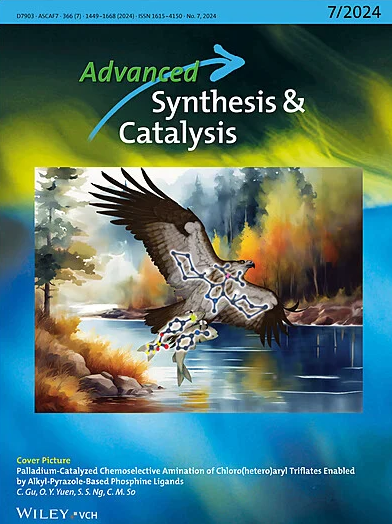Understanding Chiral Proton Catalysis using Cinchonium Derivatives in aza‐Michael Additions
IF 4.4
2区 化学
Q2 CHEMISTRY, APPLIED
引用次数: 0
Abstract
This work presents a detailed mechanistic study of a quininium‐catalyzed aza‐Michael reaction, providing essential information for advancing chiral proton catalysis (CPC). The use of cinchona derivatives as chiral proton catalysts demonstrates their potential beyond their conventional roles as base‐promoted and phase‐transfer catalysts. Competitive reaction pathways are explored using density functional theory (DFT), wavefunction theory, and microkinetic simulations. Theoretical analyses are complemented with experimental titration and kinetic techniques to verify the intrinsic details of the reaction. This study reveals an intricate hydrogen bond network formed in the rate‐ and selectivity‐determining step, involving four noncovalently attached components that favor a stronger substrate···catalyst interaction in the R transition state. Significantly, this research emphasizes the pivotal role of carboxylate anions as nucleophile‐activating bases impacting reaction yield and enantioselectivity. Therefore, this work introduces cinchonium derivatives as new options for CPC and provides a thorough mechanistic analysis significant in expanding this underdeveloped catalytic domain.求助全文
约1分钟内获得全文
求助全文
来源期刊

Advanced Synthesis & Catalysis
化学-应用化学
CiteScore
9.40
自引率
7.40%
发文量
447
审稿时长
1.8 months
期刊介绍:
Advanced Synthesis & Catalysis (ASC) is the leading primary journal in organic, organometallic, and applied chemistry.
The high impact of ASC can be attributed to the unique focus of the journal, which publishes exciting new results from academic and industrial labs on efficient, practical, and environmentally friendly organic synthesis. While homogeneous, heterogeneous, organic, and enzyme catalysis are key technologies to achieve green synthesis, significant contributions to the same goal by synthesis design, reaction techniques, flow chemistry, and continuous processing, multiphase catalysis, green solvents, catalyst immobilization, and recycling, separation science, and process development are also featured in ASC. The Aims and Scope can be found in the Notice to Authors or on the first page of the table of contents in every issue.
 求助内容:
求助内容: 应助结果提醒方式:
应助结果提醒方式:


